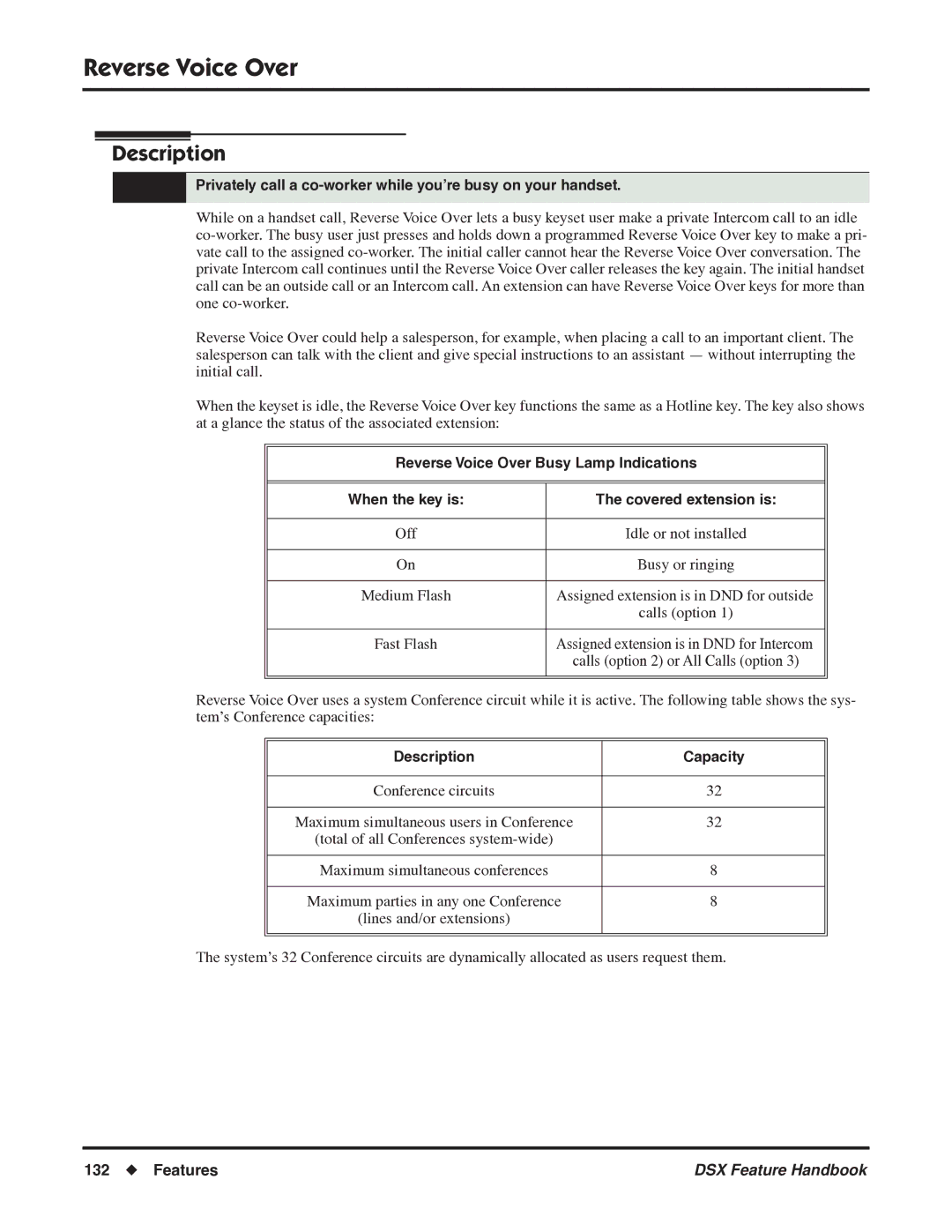
Reverse Voice Over
Reverse Voice Over
Description
Privately call a co-worker while you’re busy on your handset.
While on a handset call, Reverse Voice Over lets a busy keyset user make a private Intercom call to an idle
Reverse Voice Over could help a salesperson, for example, when placing a call to an important client. The salesperson can talk with the client and give special instructions to an assistant — without interrupting the initial call.
When the keyset is idle, the Reverse Voice Over key functions the same as a Hotline key. The key also shows at a glance the status of the associated extension:
Reverse Voice Over Busy Lamp Indications
When the key is: | The covered extension is: |
|
|
Off | Idle or not installed |
|
|
On | Busy or ringing |
|
|
Medium Flash | Assigned extension is in DND for outside |
| calls (option 1) |
|
|
Fast Flash | Assigned extension is in DND for Intercom |
| calls (option 2) or All Calls (option 3) |
|
|
Reverse Voice Over uses a system Conference circuit while it is active. The following table shows the sys- tem’s Conference capacities:
|
|
Description | Capacity |
|
|
Conference circuits | 32 |
|
|
Maximum simultaneous users in Conference | 32 |
(total of all Conferences |
|
|
|
Maximum simultaneous conferences | 8 |
|
|
Maximum parties in any one Conference | 8 |
(lines and/or extensions) |
|
|
|
|
|
The system’s 32 Conference circuits are dynamically allocated as users request them.
132 ◆ Features | DSX Feature Handbook |
